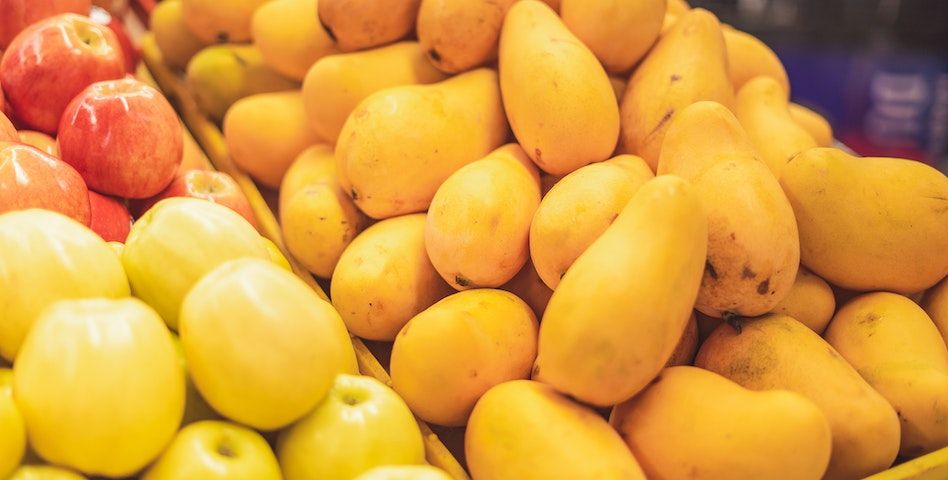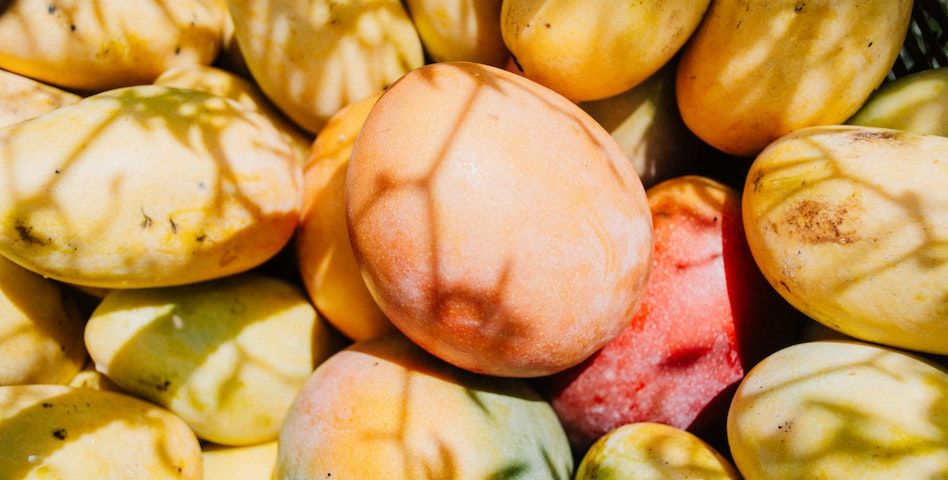Process to Grow Mangoes in Your Terrace Garden
In this guide, we'll explore the fascinating process of cultivating mango trees in your terrace garden, turning this dream into a reality.

The Sweet Joy of Growing Mangoes
The mango, often referred to as the "king of fruits," is a beloved tropical delight cherished for its sweet, juicy flesh. Imagine plucking a ripe mango from your own terrace garden and savoring its succulent flavor. In this guide, we'll explore the fascinating process of cultivating mango trees in your terrace garden, turning this dream into a reality.
1. Selecting the Right Mango Variety: A Crucial First Step
The journey to growing mangoes begins with selecting the right mango variety. Consider factors such as climate, available space, and personal preferences.

2. Choosing the Right Container: A Home for Your Mango Tree
Terrace gardens often require container gardening, and mango trees are no exception. Opt for a large, sturdy container with sufficient drainage holes to prevent waterlogging. A container with a minimum size of 15-20 gallons is ideal for the initial stages of growth.
3. Soil Preparation: The Foundation of Healthy Growth
Mango trees thrive in well-draining, loamy soil. Create a potting mix by blending garden soil with compost or well-rotted manure. Ensure that the container is filled with this nutrient-rich mixture, providing a solid foundation for your mango tree.
4. Planting the Mango Seed: Nurturing the Beginning
Mangoes can be grown from seeds, but keep in mind that it might take several years for them to bear fruit. Remove the seed from a ripe mango, let it dry for a day, and plant it about an inch deep in the container. Water it thoroughly, and soon you'll witness the emergence of your mango sapling.
5. Sunlight and Temperature: Mangoes' Best Friends
Mango trees are sun lovers and require at least 6-8 hours of direct sunlight daily. Terrace gardens typically provide ample sunlight, but ensure that your mango tree isn't subjected to harsh winds. Protecting it during cold winters, if necessary, is also crucial.
6. Watering: The Art of Maintaining Moisture
Consistent and appropriate watering is vital for mango trees. Water your sapling regularly but avoid overwatering, as mangoes are susceptible to root rot. Once the tree is established, water deeply but less frequently, allowing the soil to dry slightly between watering sessions.
7. Fertilization: Nourishing Your Mango Tree
Mango trees benefit from regular feeding. During the growing season (spring and summer), apply a balanced fertilizer with micronutrients every 6-8 weeks. Reduce fertilization during the dormant winter months. Organic fertilizers are a great choice for promoting healthy growth.

8. Pruning and Training: Shaping Your Mango Tree
Pruning is essential to shape your mango tree and encourage fruit-bearing branches. Remove dead or diseased branches and maintain an open canopy for better air circulation and sunlight penetration. Training the branches can help control the tree's size and shape.
9. Pest and Disease Management: Protecting Your Investment
Mango trees can be susceptible to pests like aphids, mealybugs, and fruit flies, as well as diseases such as anthracnose and powdery mildew. Regularly inspect your tree for signs of infestation or disease and take prompt action using organic or chemical treatments, if necessary.
10. Pollination: Ensuring Fruit Production
Mango trees are typically cross-pollinated by insects, birds, or wind. In a terrace garden, you may need to hand-pollinate the flowers using a small brush to transfer pollen from one flower to another. This encourages fruit formation and ensures a higher yield.
11. Harvesting Mangoes: The Reward of Patience
Depending on the mango variety and growing conditions, it may take a couple of years for your tree to bear fruit. Patience is key. Once the mangoes are ripe, they should come off the tree with a gentle twist. Allow them to ripen further indoors at room temperature.
12. Enjoying the Fruits of Your Labor: Savoring Homegrown Mangoes
There's nothing quite like biting into a sun-ripened mango grown in your own terrace garden. The sweet reward of your efforts makes the entire process worthwhile. Share the joy by indulging in fresh mangoes or using them in a variety of culinary delights.
Conclusion: Cultivating Mangoes, Cultivating Happiness
Growing mangoes in your terrace garden is a rewarding endeavor that connects you to nature's cycles and the satisfaction of nurturing a tree from sapling to fruitful maturity. With the right care, patience, and dedication, you can enjoy the lush, tropical flavors of homegrown mangoes while creating a thriving green oasis on your terrace.